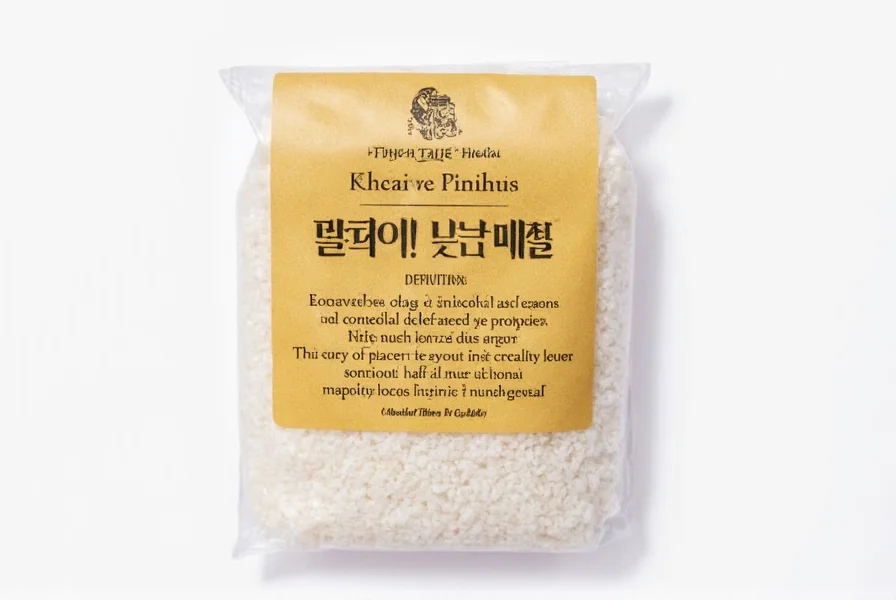Asafoetida, scientifically classified as a dried latex gum oleoresin, serves as a fundamental flavoring agent across various culinary traditions. This ancient spice has been documented in Persian, Indian, and Mediterranean cooking for over two millennia, with historical references appearing in Ayurvedic texts dating back to 600 BCE.
Botanical Origins and Production Process
Derived from several species of the Ferula genus—primarily Ferula assa-foetida, Ferula foetida, and Ferula rubricaulis—asafoetida forms when incisions are made in the plant's thick roots. The milky exudate that seeps out hardens upon exposure to air, creating the raw resin. Harvesters collect this hardened gum, which ranges in color from grayish-white to reddish-brown depending on the plant species and growing conditions.

Most commercially available asafoetida undergoes additional processing. Manufacturers typically mix the pure resin with rice flour or gum arabic (typically 20-30% dilution) to reduce its potency and prevent clumping. This processed form appears as a fine yellow-orange powder that's easier to handle and measure for cooking purposes.
Culinary Applications and Flavor Transformation
Understanding the asafoetida definition requires examining its remarkable flavor transformation. The raw spice emits a powerful sulfurous aroma reminiscent of garlic and onions due to its high concentration of volatile sulfur compounds. However, when heated in oil or ghee—a technique called tadka or tempering in Indian cooking—the compounds transform, yielding a savory, umami-rich flavor profile that enhances dishes without overpowering them.
| Form | Usage Ratio | Best For |
|---|---|---|
| Raw resin | Small pea-sized piece for 4 servings | Traditional preparations, medicinal uses |
| Processed powder | ¼ tsp for 4 servings | Everyday cooking, quick tempering |
| Asafoetida water | 1 tsp solution = ¼ tsp powder | Dal, soups, dishes requiring even distribution |
Chefs primarily use asafoetida definition in vegetarian and vegan cooking as an onion-garlic substitute, particularly in Jain cuisine where alliums are prohibited. Its flavor-enhancing properties make it indispensable in lentil dishes (dal), vegetable preparations, and breads across Indian cuisine. In Middle Eastern cooking, small amounts appear in certain stews and meat dishes to add depth.
Substitution Options and Storage Recommendations
When exploring asafoetida definition alternatives, several options exist though none perfectly replicate its unique flavor chemistry. For those seeking an asafoetida substitute in recipes:
- Onion-garlic combination: Equal parts onion and garlic powder (¼ tsp each) for every ⅛ tsp asafoetida
- Fennel seeds: ½ tsp crushed fennel seeds for dishes where licorice notes complement other ingredients
- Garlic powder: ⅛ tsp for every ⅛ tsp asafoetida in non-Jain preparations
- Seaweed flakes: Kombu or dulse for umami depth in vegan applications
Proper storage significantly extends shelf life. Keep asafoetida in an airtight container away from light and moisture. The powder form maintains potency for 12-18 months, while raw resin chunks can last 2-3 years when stored properly. Many cooks wrap the container in additional layers of plastic to contain the strong aroma that can permeate kitchen cabinets.
Nutritional Profile and Traditional Uses
While primarily valued for flavor rather than nutrition, asafoetida contains several bioactive compounds including ferulic acid, umbelliferone, and sulfur-containing compounds. Traditional medicine systems have documented potential asafoetida benefits for digestive health, with historical use as a carminative to reduce flatulence—particularly relevant given its frequent pairing with gas-producing legumes in cooking.
Modern research suggests possible anti-inflammatory and antimicrobial properties, though scientific evidence remains limited. The spice contains trace minerals including calcium, iron, and magnesium, but these appear in quantities too small to significantly impact daily nutritional requirements.
Cultural Significance Across Regions
The asafoetida definition varies slightly across cultural contexts. In India, where it's called hing (हींग), the spice holds ritual importance in some Hindu traditions, where a pinch is added to cooking to ward off negative energy. Persian culinary history references it as anghuzeh, while European medieval texts called it food of the devil due to its strong odor.

Despite its challenging raw aroma, skilled cooks consider asafoetida an essential component of authentic Indian flavor profiles. Its ability to enhance other ingredients without dominating makes it a chef's secret weapon in creating complex, layered dishes. Understanding proper usage—particularly the critical tempering step—is key to harnessing its culinary potential.











 浙公网安备
33010002000092号
浙公网安备
33010002000092号 浙B2-20120091-4
浙B2-20120091-4